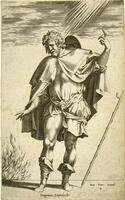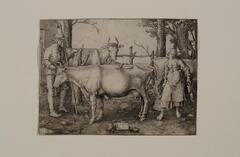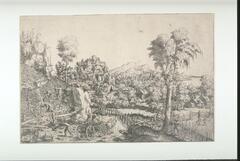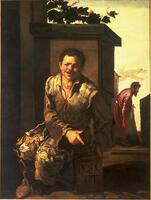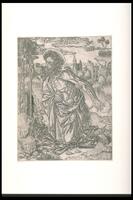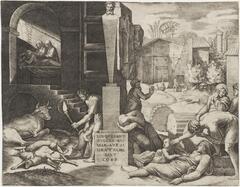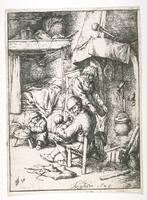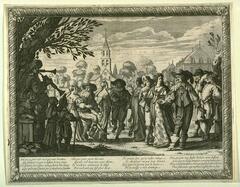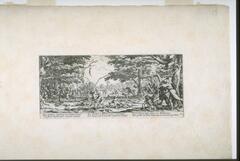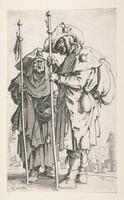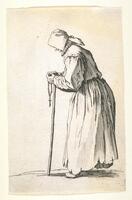Early Modern European Peasants
This collection demonstrates the broad range of approaches used to depict the early modern peasant between 1450 and 1750, from comedic caricatures of peasant weddings to more sobering renderings of poverty-stricken families. Pieter Brueghel the Younger (1564-1638), a Dutch artist, was one of the first painters to popularize images of the rambunctious feasts and religious celebrations of peasant communities. More often, however, artistic depictions of peasants served as social commentary on the plight of families faced with constant poverty. Some prints and drawings were designed to elicit sympathy (see, for example, Callot's images of peasants begging for alms in torn rags), while other works stressed the unpredictability and potential violence of peasant life. Yet poverty was not always a negative characteristic within the symbolic world of early modern Europe. The Christian tradition taught that Christ loved the poor and associated asceticism with religious virtue. Images of saints from this period often show individuals abandoning their worldly possessions and choosing to live in poverty as a means to obtain communion with God. Likewise, destitute peasants are also often shown as deeply religious figures.
Peasants led an especially precarious existence during the early modern period. The majority were tenant farmers who rented out small plots of land on unfavorable terms from noble landowners. Their low social status meant that they frequently encountered prejudice in legal disputes and were subject to high taxation by the institutional Catholic church and by royal authorities. In times of famine and plague, peasants were invariably the hardest hit and would often be forced to pile into the nearest city in desperate search of sustenance. Despite these hardships, however, peasant culture was vibrant and flourishing throughout early modern Europe. The life of the working poor life was especially marked by the rhythms and celebrations of the agricultural cycle and annual religious festivals like saints' holidays.
The early modern era saw the decline of personal charity and the rise of public charitable institutions, including hospitals, poor houses, and public bread-distribution centers. These institutions largely removed the visible presence of poverty within the early modern city and tucked it away from the public conscience. It is therefore perhaps no surprise that later 17th- and 18th-century depictions of peasants idealized the bucolic nature of life in the countryside, which appeared so far removed from the hustle and bustle of growing early modern cities. The French queen Marie-Antoinette, one of the wealthiest women of her time, was so taken with the picturesque imagery of peasant life that she constructed her own rustic peasant village retreat, the Hameau de la Reine, on the stately grounds of Versailles. The reality of poverty was, of course, much darker, as the long string of grain and tax riots held during her reign shows.
5 Links
Created For
K-12 EducatorK-12 Student
Museum Visitor
UMMA Docent
UMMA Staff
University Faculty
University Student
Rate this Resource
AVG: 0 | Ratings: 0
& Author Notes
All Rights ReservedLast Updated
January 22, 2019 3:44 p.m.Report
Reporting Policy
